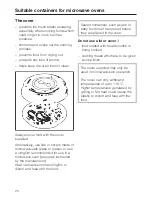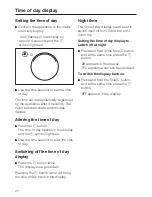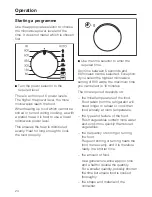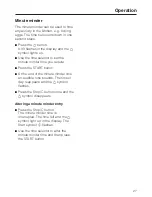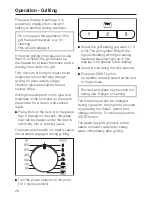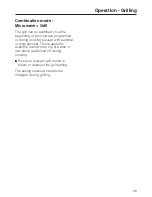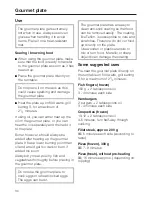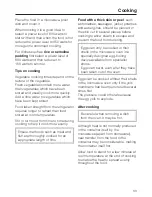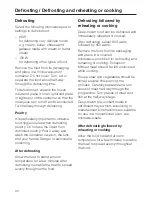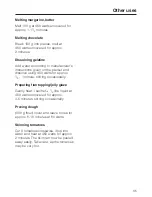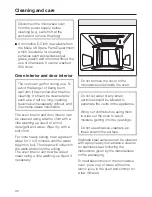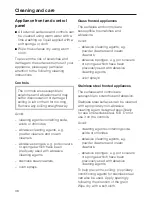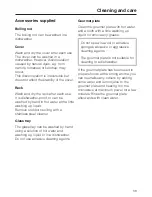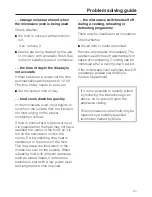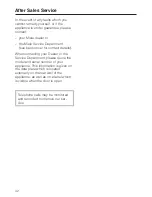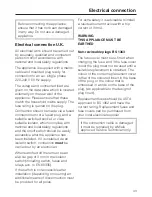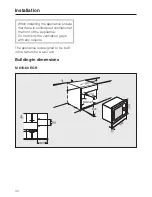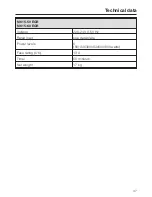
Defrosting
Select the following microwave power
settings to defrost food:
– 80 W:
for defrosting very delicate foods,
e.g. cream, butter, cheese and
gateaux made with cream or butter
cream.
– 150 W:
for defrosting other types of food.
Remove the food from its packaging
and place in a microwave-proof
container. Do not cover. Turn, stir or
separate the food about half-way
through the defrosting time.
To defrost meat, unpack the frozen
meat and place it on an upturned plate
in a glass or china container so that the
meat juice can run off and be collected.
Turn halfway through defrosting.
Poultry
It is particularly important to observe
food hygiene rules when defrosting
poultry. Do not use the liquid from
defrosted poultry. Pour it away and
wash the container it was in, the sink
and your hands. Danger of salmonella
poisoning.
After defrosting
Allow the food to stand at room
temperature for a few minutes after
defrosting to enable the heat to spread
evenly throughout the food.
Defrosting followed by
reheating or cooking
Deep-frozen food can be defrosted and
immediately reheated or cooked.
After defrosting, select 800 watts
followed by 450 watts.
Remove the food from its packaging
and place in a covered
microwave-proof dish for defrosting and
reheating or cooking. Exception:
Minced meat should be left uncovered
while cooking.
Soups, stew and vegetables should be
stirred several times during the
process. Carefully separate and turn
slices of meat half-way through the
programme. Turn pieces of meat and
fish at the half-way stage.
Deep-frozen pre-cooked meals in
cardboard trays which, according to
manufacturer’s instructions are suitable
for use in a conventional oven, are
microwave-safe.
After defrosting followed by
reheating or cooking
Allow the food to stand at room
temperature for a few minutes to enable
the heat to spread evenly throughout
the food.
Defrosting / Defrosting and reheating or cooking
34

